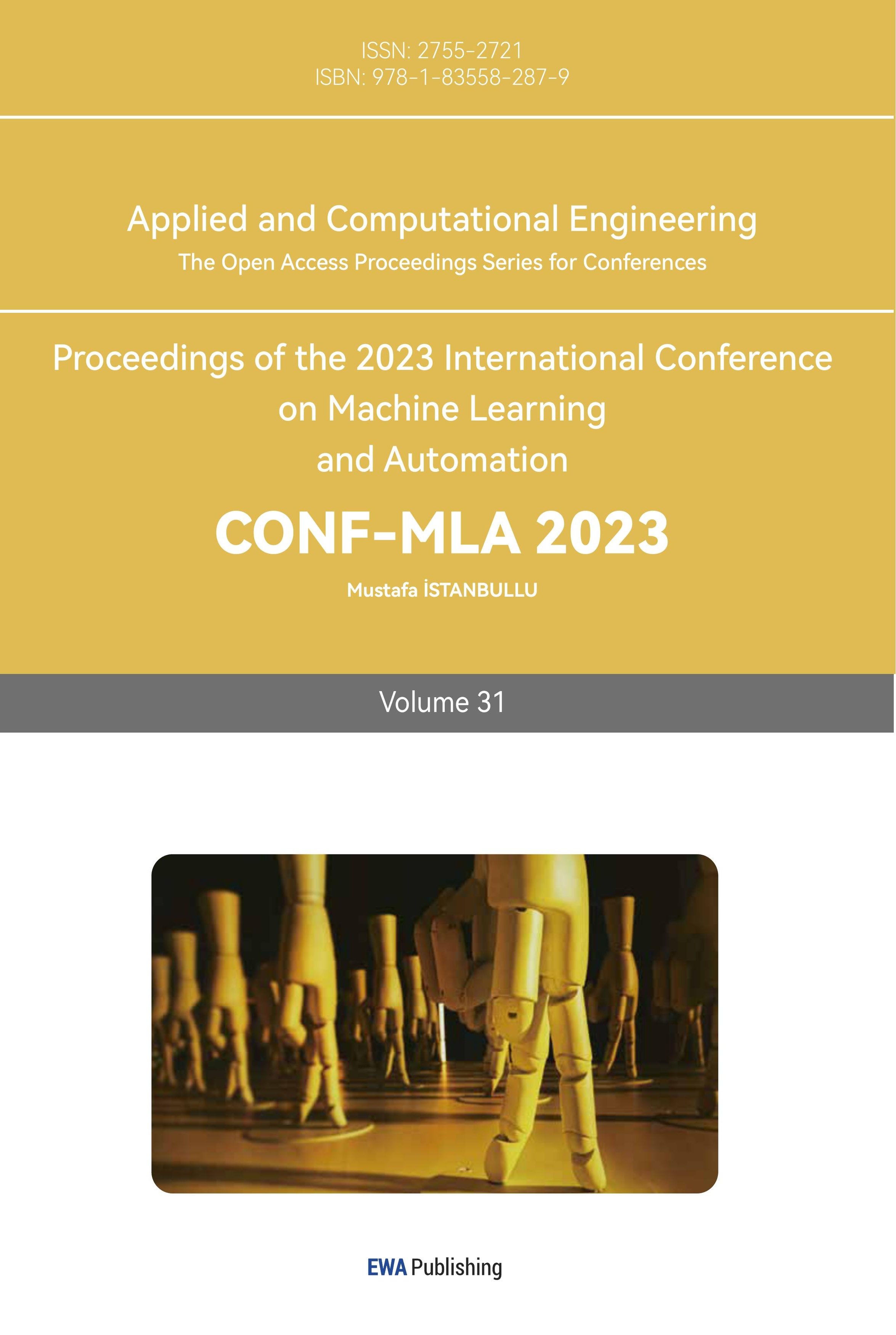References
[1]. Cai M, Wang W. Summary of research on the interactive design of automobile intelligent cockpit Packaging. Engineering, 2023, 44(06), 430-40.
[2]. World Health Organization. Road Traffic Injuries. Available online: http://www.who.net/news-room/fact-sheets/detail/road-traffic-injuries (accessed on 8 June 8, 2023).
[3]. Liu S, Wang X, Ji H, Wang L, Hou Z. A novel driver abnormal behaviour recognition and analysis strategy and its application in a practical vehicle. Symmetry, 2022, 14(10), 1956.
[4]. Rahman H, Ahmed M. U, Barua S, Funk P, Begum S. Vision-based driver’s cognitive load classification considering eye movement using machine learning and deep learning. Sensors, 2021, 21(23), 8019.
[5]. Dewi C, Chen R-C, Chang C-W, Wu S-H, Jiang X, Yu H. Eye aspect ratio for real-time Drowsiness detection to improve driver safety, Electronics, 2022, 11(19), 3183
[6]. Yan X, He J, Wu G, Zhang C, Wang C. A proactive recognition system for detecting commercial vehicle driver’s distracted behaviour. Sensors, 2022, 22(6), 2373.
[7]. Agrawal U, Giripunje S, Bajaj, P. Emotion and gesture recognition with soft computing tool for driver’s assistance system in human-centered transportation. IEEE International Conference on Systems, Man, and Cybernetics, Manchester, UK, 2013, pp. 4612-4616.
[8]. Ali M, Mosa A. H, Machot F. A, Kyamakya K. Emotion recognition involving physiological and speech signals: A comprehensive review. Recent Advances in Nonlinear Dynamics and Synchronization: With Selected Applications in Electrical Engineering, Neurocomputing, and Transportation, 2018, 287-302.
[9]. Wang Y, Ding X, Yuan G, and Fu X. Dual-cameras-based driver’s eye gaze tracking system with non-linear gaze point refinement. Sensors, 2022, 22(6), 2326.
[10]. Ancilin J, & Milton A. Improved speech emotion recognition with Mel frequency magnitude coefficient. Applied Acoustics, 2021, 179, 108046.
Cite this article
Zhang,X. (2024). Driver's hazardous state detection in human-computer interaction of automotive cockpits. Applied and Computational Engineering,31,64-71.
Data availability
The datasets used and/or analyzed during the current study will be available from the authors upon reasonable request.
Disclaimer/Publisher's Note
The statements, opinions and data contained in all publications are solely those of the individual author(s) and contributor(s) and not of EWA Publishing and/or the editor(s). EWA Publishing and/or the editor(s) disclaim responsibility for any injury to people or property resulting from any ideas, methods, instructions or products referred to in the content.
About volume
Volume title: Proceedings of the 2023 International Conference on Machine Learning and Automation
© 2024 by the author(s). Licensee EWA Publishing, Oxford, UK. This article is an open access article distributed under the terms and
conditions of the Creative Commons Attribution (CC BY) license. Authors who
publish this series agree to the following terms:
1. Authors retain copyright and grant the series right of first publication with the work simultaneously licensed under a Creative Commons
Attribution License that allows others to share the work with an acknowledgment of the work's authorship and initial publication in this
series.
2. Authors are able to enter into separate, additional contractual arrangements for the non-exclusive distribution of the series's published
version of the work (e.g., post it to an institutional repository or publish it in a book), with an acknowledgment of its initial
publication in this series.
3. Authors are permitted and encouraged to post their work online (e.g., in institutional repositories or on their website) prior to and
during the submission process, as it can lead to productive exchanges, as well as earlier and greater citation of published work (See
Open access policy for details).
References
[1]. Cai M, Wang W. Summary of research on the interactive design of automobile intelligent cockpit Packaging. Engineering, 2023, 44(06), 430-40.
[2]. World Health Organization. Road Traffic Injuries. Available online: http://www.who.net/news-room/fact-sheets/detail/road-traffic-injuries (accessed on 8 June 8, 2023).
[3]. Liu S, Wang X, Ji H, Wang L, Hou Z. A novel driver abnormal behaviour recognition and analysis strategy and its application in a practical vehicle. Symmetry, 2022, 14(10), 1956.
[4]. Rahman H, Ahmed M. U, Barua S, Funk P, Begum S. Vision-based driver’s cognitive load classification considering eye movement using machine learning and deep learning. Sensors, 2021, 21(23), 8019.
[5]. Dewi C, Chen R-C, Chang C-W, Wu S-H, Jiang X, Yu H. Eye aspect ratio for real-time Drowsiness detection to improve driver safety, Electronics, 2022, 11(19), 3183
[6]. Yan X, He J, Wu G, Zhang C, Wang C. A proactive recognition system for detecting commercial vehicle driver’s distracted behaviour. Sensors, 2022, 22(6), 2373.
[7]. Agrawal U, Giripunje S, Bajaj, P. Emotion and gesture recognition with soft computing tool for driver’s assistance system in human-centered transportation. IEEE International Conference on Systems, Man, and Cybernetics, Manchester, UK, 2013, pp. 4612-4616.
[8]. Ali M, Mosa A. H, Machot F. A, Kyamakya K. Emotion recognition involving physiological and speech signals: A comprehensive review. Recent Advances in Nonlinear Dynamics and Synchronization: With Selected Applications in Electrical Engineering, Neurocomputing, and Transportation, 2018, 287-302.
[9]. Wang Y, Ding X, Yuan G, and Fu X. Dual-cameras-based driver’s eye gaze tracking system with non-linear gaze point refinement. Sensors, 2022, 22(6), 2326.
[10]. Ancilin J, & Milton A. Improved speech emotion recognition with Mel frequency magnitude coefficient. Applied Acoustics, 2021, 179, 108046.









